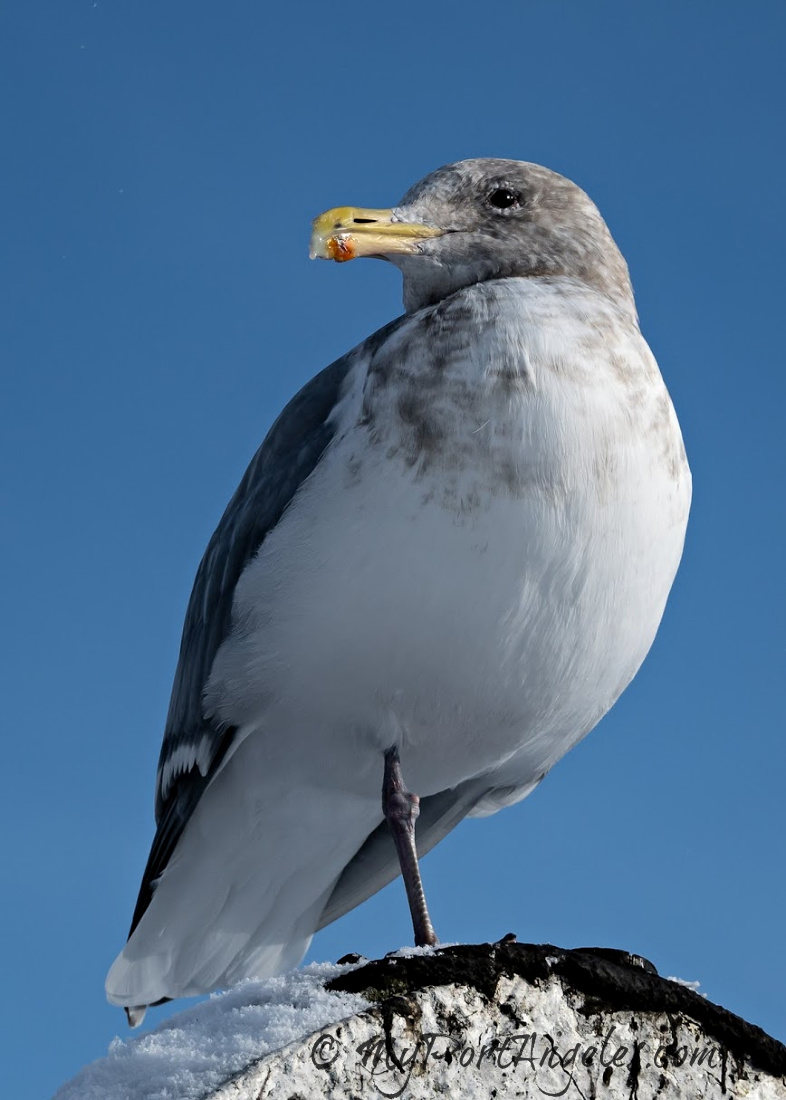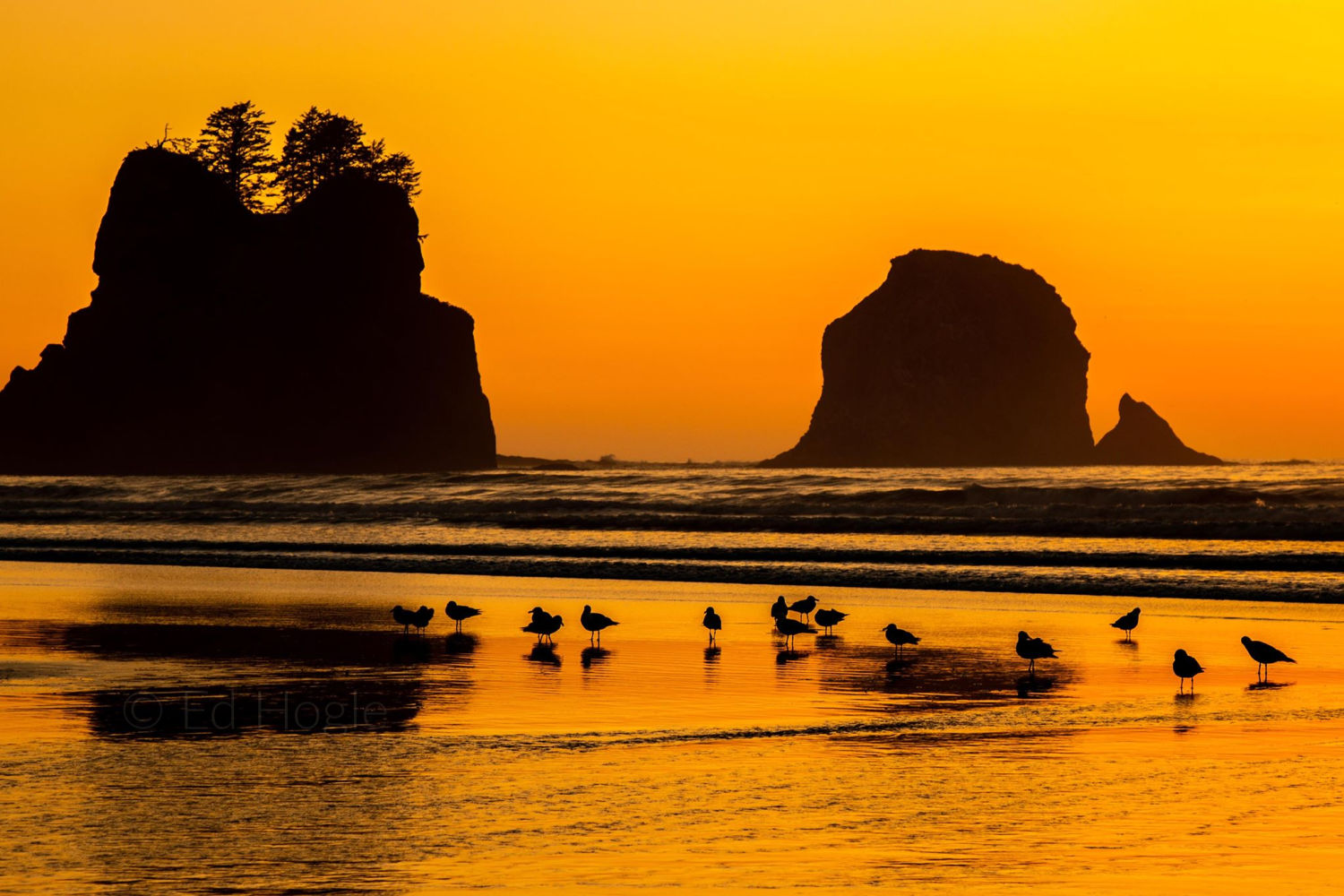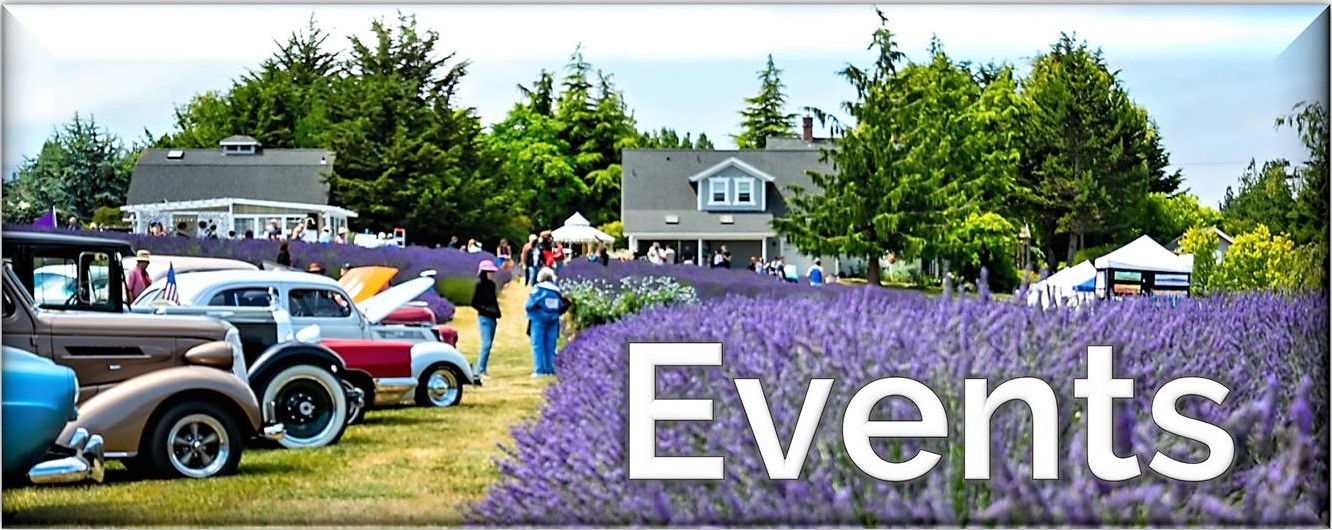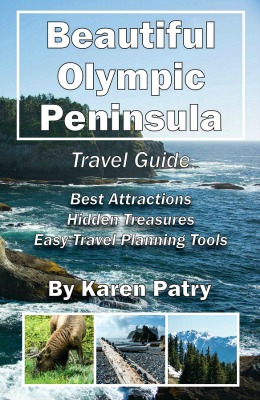Seagull Pictures
Seagull Pictures: Details about Pacific Northwest species of gulls, with photos, surprising facts, other info. Maybe gulls are more than just rats of the skies?
The infamous seagull is well known around the Pacific Northwest and indeed the world. They get a bad rap at times for being nothing more than dastardly rats of the skies.
These snack thieves and dropping bombers can be thick as water around the Olympic Peninsula. However there may be more to this bird than you would expect.
Did you realize that there is, in fact, no such thing as a seagull?
The birds we refer to as seagulls are actually several separate species of gulls (Laridae), and because they all look fairly similar and tend to hang out together, we refer to them collectively as "seagulls."
General Info about the Gull (Laridae) family:
- Type: Bird
- Diet: Omnivore (they are scavengers)
- Life span: 10-15 years
- Size: 30-75 cm (12" - 29.5")
- Weight: 120-1770 grams (4 ounces - 3.9 pounds)
- Habitat: Coastlines, bays, major lakes, and urban areas
- Range: Global
 Glaucous-winged gull has snagged his next meal. Photo taken near the Port Townsend WA marina.
Glaucous-winged gull has snagged his next meal. Photo taken near the Port Townsend WA marina.Seagull Pictures: Common Gulls on the Olympic Peninsula
As you explore the coastal beaches and towns in the Pacific Northwest, including Port Angeles, WA, see if you can identify the differences between various species of gulls!
These 6 species of gulls are common around Port Angeles and across the Olympic Peninsula. But with more than 50 total species of gulls, you can be sure there will be more species of gulls than just these:
Glaucous-Winged Gull (Larus glaucescens)
This large gull has the typical white head, but in place of black feather tipping, they are instead, gray. The name "glaucous-winged" is a reference to this pearly grey coloring on the parts of the wings and tail that in many other gulls is typically black. In its juvenile stage, its head, chest and wings are a light brown color, can be speckled more than a solid color.
The glaucous-winged gull tips the scales at around 2 pounds (907 g), and is the most common gull in Seattle and surrounding region including Port Townsend on the Olympic Peninsula.
This gull is rarely seen far from its natural habitat, the coast of the Pacific Ocean. Frequent sounds that it makes are "kak-kak-kak," "wow" or a high-pitched wailing sound.
Glaucous-Winged Gull Photo Credit: Steve Bloomquist, who stated: "I learned from watching this how methodical gulls are. The big claw was dismembered first and is visible to the left." This gull is probably a non-breeding adult. Photo was taken on Ediz Hook in Port Angeles, WA.
Western Gull (Larus occidentalis)
This gull lives on the west coast of North America and ranges from British Columbia, Canada to Baja California in Mexico.
Appearance: A white head and chest, with grey wings and a black tail (with a few white spots). In its juvenile stage, the Western gull is a lighter brown color, as it ages, it transitions slowly to the adult white and grey, losing its brown tones. The adult Western Gull weighs around 2 pounds (907 g).
The Western gull usually feeds on sea life and roadkill/dead animal carcasses.
California Gull (Larus californicus)
Appearance: The California gull has a white head chest, with grey wings and a black tail. Its distinguishing features are its black eyes, even in its adult hood, and a black ring toward the end of its beak. It weighs roughly 1.5 pounds (680 g)
The California gull migrates mostly in Western North America, Southern Canada to eastern California and Colorado. Most California gulls migrate to the west coast in the winter.
Ring-billed Gull (Larus delawarensis)
The Ring-billed Gull is probably the most common gull in North America. It inhabits the entirety of the United States, the northern areas of Mexico, and most of Canada.
It has a white head and chest, pearly grey wings with black tips, and a black tipped tail. Their eyes in adult hood are a piercing yellow color, but are black in their juvenile stage. The Ring-billed gull is a mixed white and brown color in their juvenile stage.
As adults, Ring-billed Gulls weigh about 1.1 pounds (500 g)
Photo credit: Wikipedia
Herring Gull (American) (Larus argentatus)
The Herring Gull has a white head and chest with pearly grey wings (the tips are often black) and a white tail. When transitioning from a juvenile to an adult, its eyes turn from black to a bright piercing yellow color. in its juvenile stage it is a light brown white mix, but as they age the brown fades into white.
Herring gulls weigh around 2.1 pounds as adults (953 g).
The American version of Herring Gulls are widespread throughout all but the most desertified areas of North America. They are also found in Europe with enough distinctive changes that biologists distinguish between "American" and "European" herring gulls.
(Photo: This juvenile gull is believed to be a Herring Gull, but might instead be an Iceland Gull. Juveniles of both species at times look extremely similar, being difficult to distinguish unless they are side-by-side.)
Heerman's Gull (Larus heermanni)
This species was named after Adolphus Lewis Heerman, a nineteenth-century naturalist and explorer.
This bird's appearance is quite different than other gulls that we tend to see in the Pacific Northwest, having a red beak with a black tip, black legs and feet, a white head, gray chest, and a black tail and wings. They also have what looks like a line of bright red eyeliner around their eyes. This natural feature just makes them all the more beautiful.
The Heerman's Gull weighs approximately 1.1 pounds (500 g).
This gull migrates mostly between southwestern British Columbia, and Mexico, sticking to coastal areas rather than the inland land mass.
Photo credit: Wikipedia
Photo above: Seagulls silhouetted against a brilliant sunset at Shi Shi Beach at Point of the Arches. Photo Credit and Thanks to: Ed Hogle.
Fun and Interesting Facts About Seagulls
- In Indigenous culture, the seagull represents a carefree attitude and way of life, versatility, independence, and complete freedom in the world.
- Seagulls are quite clever, as birds go. They have learned tricks to catch their prey, even if the conditions are not right. For example, they will tap the earth with their feet as a group to imitate the sound of rainfall so that earthworms will come to the surface.
- Seagulls are hands-on parents to their young. The male and female mate for life and take turns keeping the eggs warm, and feeding and keeping predators away from the chicks when they are at their most vulnerable.
- Unlike most mammals, Seagulls are able to ingest both salt water and fresh water. They have a special pair of glands, located directly above their eyes, which excretes the excess salt through slits in their bill. In this way they can safely drink ocean water while far out to sea.
- Gulls use a range of vocalizations and body movements to converse, warn, and/or communicate with other birds and creatures, including humans.
- Seagulls exhibit intelligent hunting and feeding behaviors, such as dropping their hard shelled prey on rocks to break the shell open and following plows in fields to feast on the bugs, worms, and other menu items that the plow tines unearth.
Tell Us Your Seagull Story and Share Your Photos With Us!
Whether we think of them as 'sky rats,' 'rascals,' 'snack snatchers,' 'dropping bombers,' or 'coastal comedians,' seagulls have a variety of reputations along with an endless repertoire of antics. Most of us have at least one experience involving these carefree creatures! Share your seagull stories with us here on our website, along with some exceptional photos if you have them! We know that other visitors will enjoy these stories and seeing the photos as well.
We're happy to ensure professional and amateur photographers get credit for their work. Leave us your name in the form below, and means of contact, website, or FB page info so we can link back to you.















